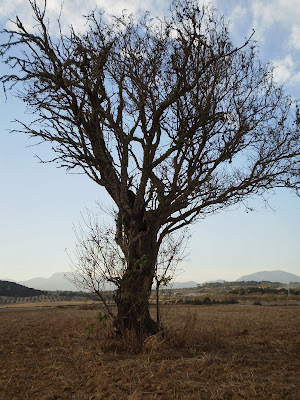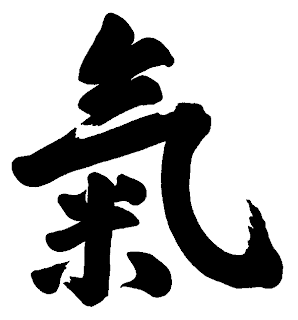Prana, qi, ki...
‘Prana’ is a
Sanskrit word for breath or ‘air inspired’ (from the verb ‘pran’: aspire), but
also means ‘universal and invisible energy that enters the body through
breathing’. Prana is a physical principle that permeates all forms of life,
that which gives life and wisdom to beings and that is or comes from a kind of ‘universal
spirit’.
The first mention
of the word ‘prana’ appears in the Rig-Veda, the oldest text of India, in the
mid-second millennium B.C.
Prana shares the global
sense of ‘air-life-wisdom’ with many terms of different ancient cultures: Greek
‘psyché’ and ‘pneuma’, Hebrew ‘ruach’ and ‘néfesh’, Latin ‘spiritus’ and ‘anemos’,
Arabic ‘ruh’... or the Hindu atman, which also means soul while air or breath.
(See the post ‘Pneuma...’ of this blog). Often, too, prana is confused with
jiva, another Sanskrit term for soul-air, as there is a close connection
between them. Jiva, in particular, would be the portion of air or prana which
is located specifically in the cavity of the heart, which tends to be
associated with the structural physical body as opposed to the more voluble etheric
body of prana, but they are essentially the same air. (One can get an idea of the meaning of
prana -or atman, jiva...- consulting the Sanskrit-English Dictionary of Monier
Monier-Williams.)
In Vedic tradition
prana means ‘vital air’ or ‘life force’. In China it is known as ‘qi’, ‘ki’ in
Japan, in Polynesia as ‘mana’. The fact is that it is understood that it is
present throughout the universe, in the macrocosm (space) and the microcosm
(body of living beings). Its proper flow to (and in) our bodies ensures our
good health. Prana is the subtle material energy that arises from the universe
and that functions as an interface between the physical body and the subtle or
ethereal 'body' of mind, allowing all psychophysical functions (ie, the ‘animation’,
from the Latin ‘anima’) .
According to ayurvedic
medicine and yoga, prana flows through a network of channels called nadis. They
are tubes (bronchi, arteries, veins...) through which flows the prana (inspired
air). In the western hermetic interpretation, nadis are not just holes where
the air flows into the body through breathing and blood circulation, but also hypothetical
channels, called ‘akashic’ or ‘ethereal’ (being ‘akasha’ ether in Sanskrit).
These channels would be distributed throughout the universe and also intertwined
throughout our bodies, and through them would flow prana energy. As C. W.
Leadbeater wrote, prana would be an energy that comes in inspired air, which
flows through the nadis and that is used in some way through the cardiovascular
system and the nervous system to bring soul and knowledge.
In Chinese
medicine, especially acupuncture and its derivations, the equivalent of prana
is qi. Qi is literally breath and mood, is an active principle forming part of
any living thing which has to be understood as a ‘vital energy flow’. Qi is an
air energy that continuously flows by nature, and a disruption of its free flow
in the body is the basis of physical and psychological disorders.
 Most oriental
spiritual and therapeutic systems include attention to breathing or some
breathing techniques. The main tool to understand qi is breathing. In Japanese,
ki is sometimes translated as ‘energy, presence, will, health’. In some
contexts the Japanese word ki translates directly by ‘breathing’. Through
meditation on breath, or breathing techniques, it is claimed that you can
develop the natural energy of your person and harmonize your personality and
metabolism.
Most oriental
spiritual and therapeutic systems include attention to breathing or some
breathing techniques. The main tool to understand qi is breathing. In Japanese,
ki is sometimes translated as ‘energy, presence, will, health’. In some
contexts the Japanese word ki translates directly by ‘breathing’. Through
meditation on breath, or breathing techniques, it is claimed that you can
develop the natural energy of your person and harmonize your personality and
metabolism.
Some zen and budo masters
say, moreover, that breath is the breath of cosmos, and that all elements of
nature are a piece of whole, and reality is expressed in alternating opposite
processes (which are called ‘yinyang’). Cosmos breathes while we breathe,
alternately. In meditation, also, breathing is considered an expression of
mood, as well as the link between emotions, thinking, instincts and physical
states.


natogres-n Wayne Wolf https://wakelet.com/wake/pwtrg89_ML97dOx-A4702
ReplyDeleteniminetiv